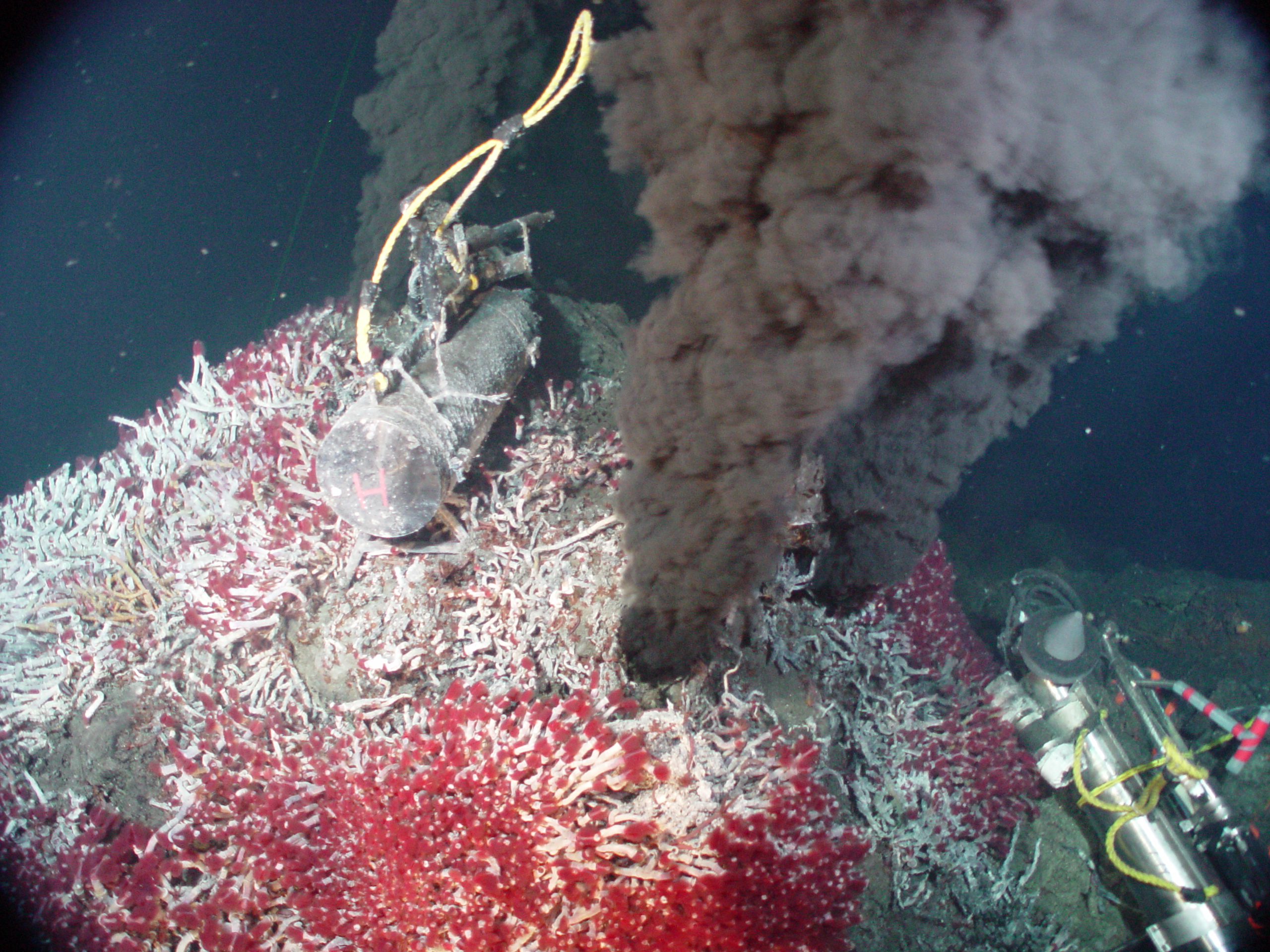Citation: Strzepek, R.F., Boyd, P.W., Sunda, W.G., 2019. Photosynthetic adaptation to low iron, light, and temperature in Southern Ocean phytoplankton. Proceedings of the National Academy of Sciences 116, 4388–4393. https://doi.org/10.1073/pnas.1810886116
Note: This post was originally posted in April 2019 but was lost due to server issues so it is being re-posted.
Why study phytoplankton?
Phytoplankton are tiny organisms at the base of the marine food web that fuel the productivity of marine life. They are key players in the biological pump, the biologically fueled part of the carbon cycle. The carbon cycle describes how carbon is used, transformed, and recycled in Earth processes and is a process that occurs in all ocean basins. In the carbon cycle, phytoplankton within the sunlit region of the ocean take up carbon dioxide from the atmosphere and convert it into organic carbon.
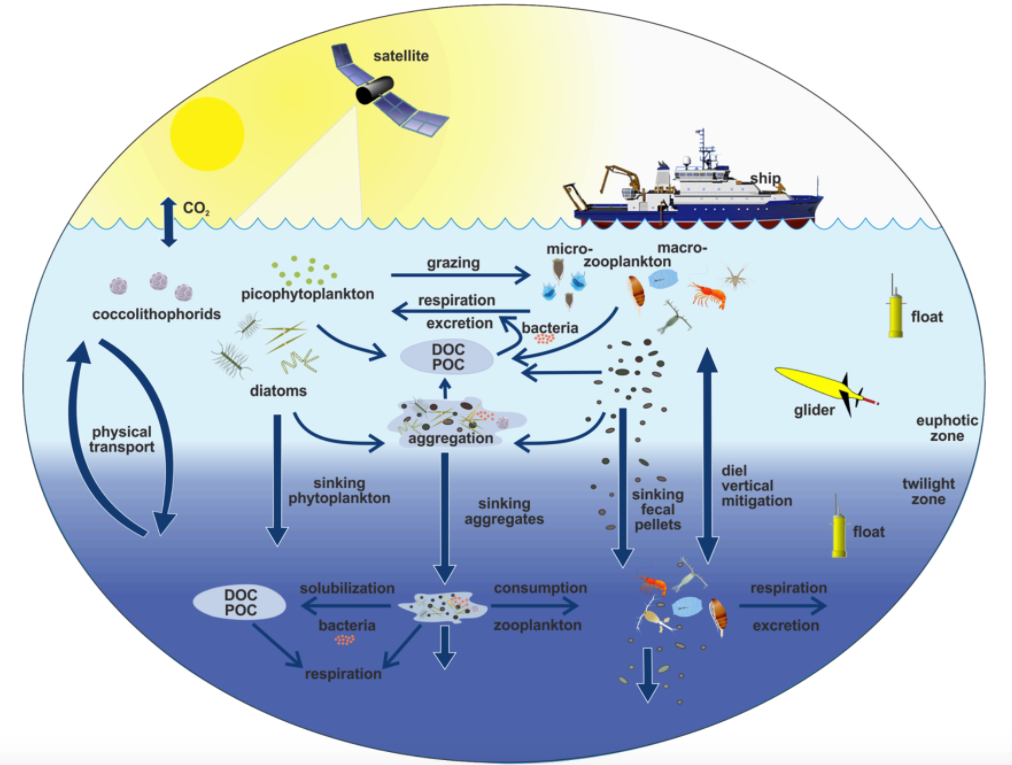
The organic carbon produced by phytoplankton help fuel the carbon cycle by either: 1) getting eaten by zooplankton, a type of larger planktonic organism 2) sinking out to the deep ocean after dying or 3) contracts a marine virus that causes the cellular content (organic carbon) to leak out. The contribution that phytoplankton make to the carbon pump differs between ocean regions as the types and abundance of phytoplankton vary. Phytoplankton species vary between different ocean regions depending on specific environmental conditions, such as light, nutrients and temperature. The Southern Ocean (SO) surrounding Antarctica is home to a particular type of phytoplankton called diatoms.
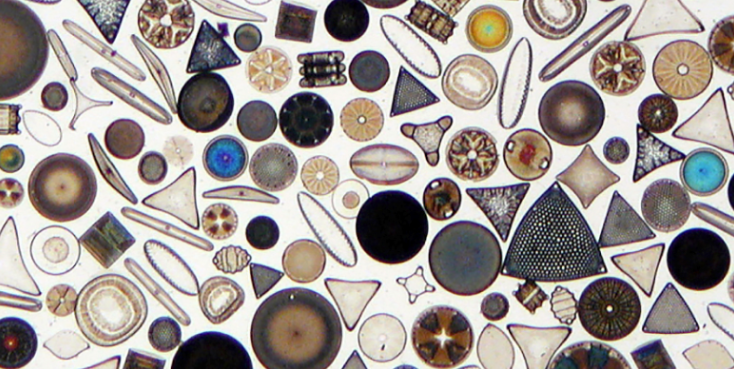
How do light, temperature and iron affect diatoms? Primary production, or the amount of carbon dioxide that phytoplankton take up in a given amount of time, is limited in the SO by light, temperature, and iron availability. Diatoms, like other types of phytoplankton, are photosynthetic, so they require light to produce energy (food). Many regions of the SO do not receive enough sunlight because of ice coverage. Ice-cold water temperatures in the SO further hinder diatom productivity because of a reduction in their cellular efficiency, such that more energy is required to take up carbon dioxide. The lack of available iron in the SO also limits production. The main mechanism for iron deposition into the ocean is through dust transport via atmospheric winds that do not often reach the SO. For phytoplankton, iron is a required nutrient for their photosystems (PS) (the main iron containing part of the cell and make up the foundation of the photosynthetic machinery). Despite these challenges of darkness, coldness and lack of iron, SO diatoms have adapted. These adaptations are explored by Strzepek et al (2019).
How the study was done:
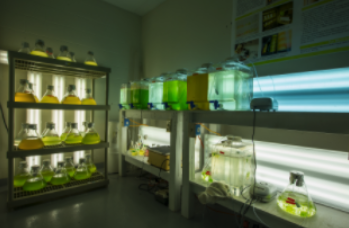
To understand how SO diatoms have adapted to extreme conditions, Strzepek et al (2019) studied the diatoms’ photosystems to measure the use efficiency of both their PS’s in iron-rich versus iron- limited conditions. The team examined cultures of three different SO diatom species and two warmer water (temperate) species. They grew the diatom cultures in two different conditions: one with plenty of iron and the other with low iron (to mimic SO conditions). To reflect the different environmental conditions in the SO compared to temperate oceanic regions, SO diatom cultures were grown at a lower light intensity and a lower temperature than the temperate diatom cultures. The cellular carbon content of the SO and temperate diatom species were normalized by determining the photosynthetic iron to carbon ratio for each diatom species so that scientists could accurately compare the PS use efficiency across species.
What did the study find?
Strzepek et al. (2019) determined that SO diatoms have higher PS efficiencies than temperate species due to their larger photosystems compared to temperate diatoms. It is usually disadvantageous for diatoms to have larger photosystems because increased surface area results in increased energy loss as heat. However, in the cold environment, such as in the Southern Ocean, the larger size means that heat loss decreases and more energy remains in the photosystems to drive photosynthesis. SO diatoms have adapted to have larger photosynthetic antennae, or in other words, larger photosynthetic machinery to be able to harvest more light in light-limited regions. In fact, the authors describe how the adaptation of these larger photosynthetic antennae are among the largest ever recorded in marine phytoplankton! This economical adaptation for SO diatoms results in higher production rates than the frigid, dark and low iron Southern Ocean environment should permit.
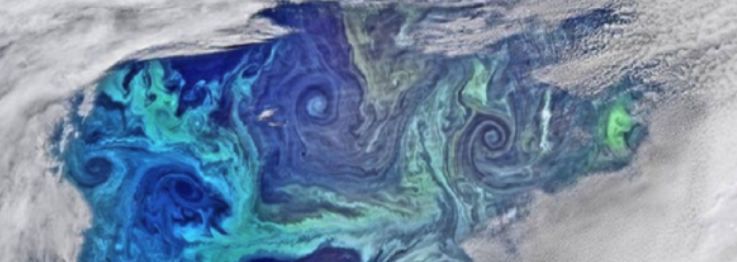
This research shows that SO diatoms have adapted quite well to the harsh conditions found in their environment. However, with environmental changes, such as a warming ocean, expected to continue, how will increased water temperatures influence SO diatoms? Will they be able to adapt to warmer water, less ice and more sunlight? How will iron concentrations in the SO fluctuate with climate change? Understanding the adaptations of SO diatoms, helps improve predictions about the overall productivity of the Southern Ocean and its impact on global carbon cycles as the ocean continues to change.
I love writing of all kinds. As a PhD student at the Graduate School of Oceanography (URI), I use using genetic techniques to study phytoplankton diversity. I am interested in understanding how environmental stressors associated with climate change affect phytoplankton community dynamics and thus, overall ecosystem function. Prior to graduate school, I spent two years as a plankton analyst in the Marine Invasions Lab at the Smithsonian Environmental Research Center (SERC) studying phytoplankton in ballast water of cargo ships and gaining experience with phytoplankton taxonomy and culturing techniques. In my free time I enjoy making my own pottery and hiking in the White Mountains (NH).

